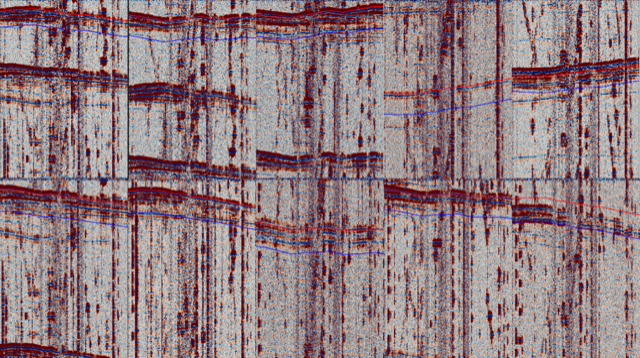10 October 2023–Fiber optic cable snaking beneath the Penn State campus, passing under the athletic buildings and campus fields, can detect seismic waves generated by lightning storms. But what exactly causes lightning quakes—and why do we care about them?
A new study published in the Bulletin of the Seismological Society of America confirms that lightning quakes begin as airborne acoustic waves before coupling with the ground. The resulting seismic waves can be used to image the shallow subsurface in this urban area, helping to map features of interest such as sinkholes underlying the campus.
Although lightning quakes have been observed before, scientists have debated about whether they are caused by acoustic coupling or by an electromagnetic field generated by the lighting. The study by Penn State Ph.D. researcher Nolan Roth and colleagues did not find any electro-seismic coupling in their observations of lightning quakes collected between April 2019 and May 2021.
At the heart of their research is the Fiber Optic foR Environmental SEnsEing (FORESEE) project, which has repurposed an unused or “dark” telecommunications fiber optic cable for a technique called Distributed Acoustic Sensing or DAS.
DAS uses the tiny internal flaws in a long optical fiber as thousands of seismic sensors. An instrument called an interrogator at one end of the fiber sends laser pulses down the cable that are reflected off the fiber flaws and bounced back to the instrument. When the fiber is disturbed by seismic activity, such as a lightning quake, researchers can examine changes in the reflected pulses to learn more about the resulting seismic waves.
“I just love the ingenuity of DAS, how it takes something pretty mundane and turns it into this miraculous sensor,” Roth said.

The extreme temperatures generated by a lightning bolt cause the atmosphere around it to expand suddenly, creating a shockwave that turns into an acoustic wave several meters away from the bolt. When the acoustic wave meets the ground, its energy is transformed into shallow seismic waves.
“The ‘quakes’ are just the way that the thunder shakes the ground,” Roth explained, “so you’re feeling a lightning quake whenever you hear thunder.”
The DAS method “is incredibly sensitive to even these small perturbations,” he added.
One of the drawbacks of DAS, however, is that it can only act as a single-component sensor measuring movement in one direction, compared to three-component seismometers which measure wave movement in the up-down, north-south, and east-west directions.
For the lightning quake project, Roth and his colleagues developed a new analysis method that allowed them to discern different types of seismic waves from the DAS array so that their results can be compared to the data gleaned from traditional seismometers. “Hopefully it’s something that can get developed further in the DAS field and help make DAS just as good as traditional three-component seismology,” Roth said.
Data from DAS arrays like FORESEE are especially useful for urban infrastructure studies, where it can be expensive and difficult to set up permanent seismic stations.
Seismic waves from lightning quakes move through the top few to tens of meters of the ground. The way these waves interact with these ground layers and the surrounding infrastructure can be used to map out features in the subsurface—such as those Penn State sinkholes that lie about ten meters below the surface.
Roth said lightning quakes detected through DAS also could provide a unique source of seismic data for subsurface mapping in places where storms are frequent but earthquakes are rare, such as the eastern and central United States.
“If we can just listen to the weather and use what the weather is telling us with these lightning quakes,” he said, “it’s an invaluable resource.”
